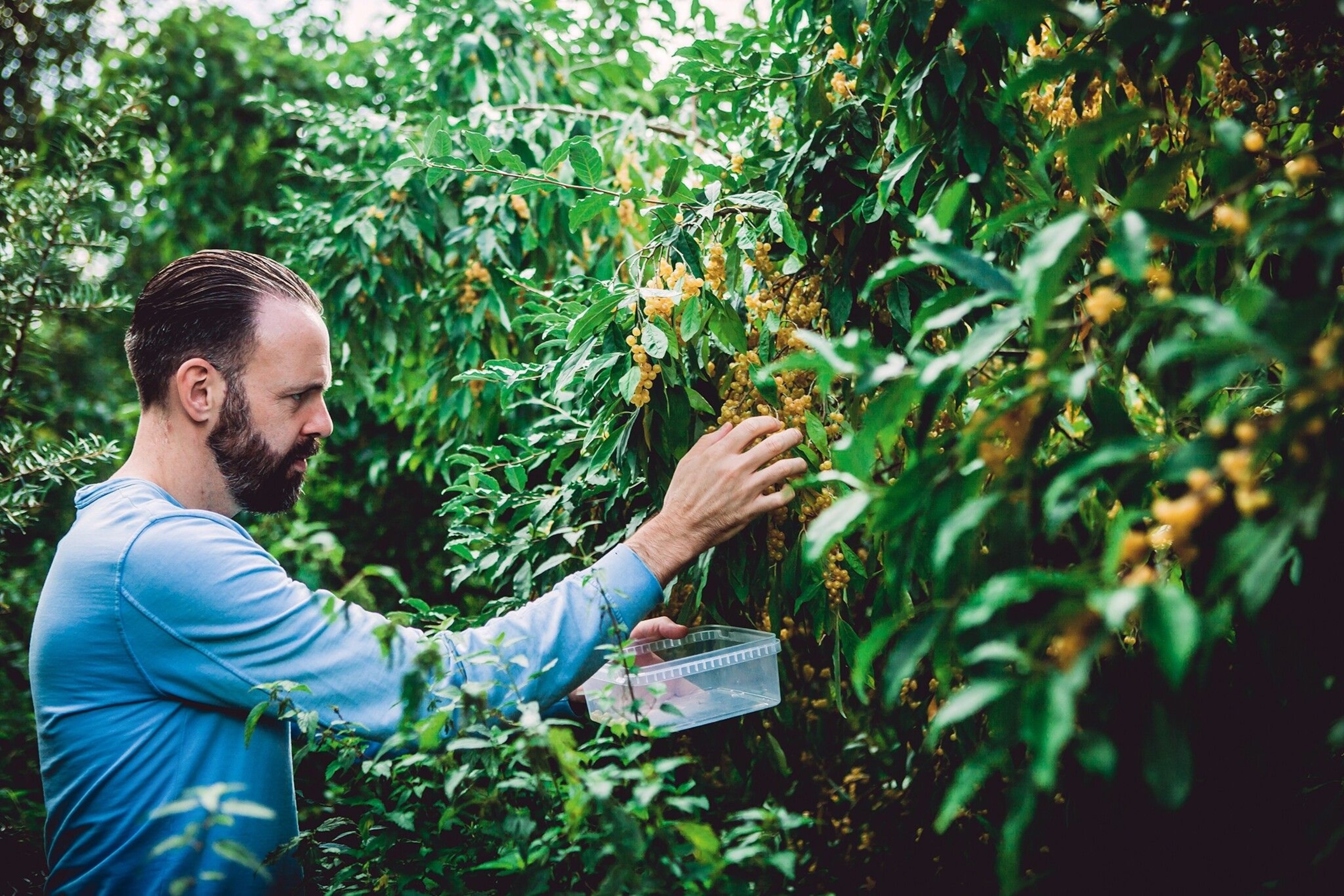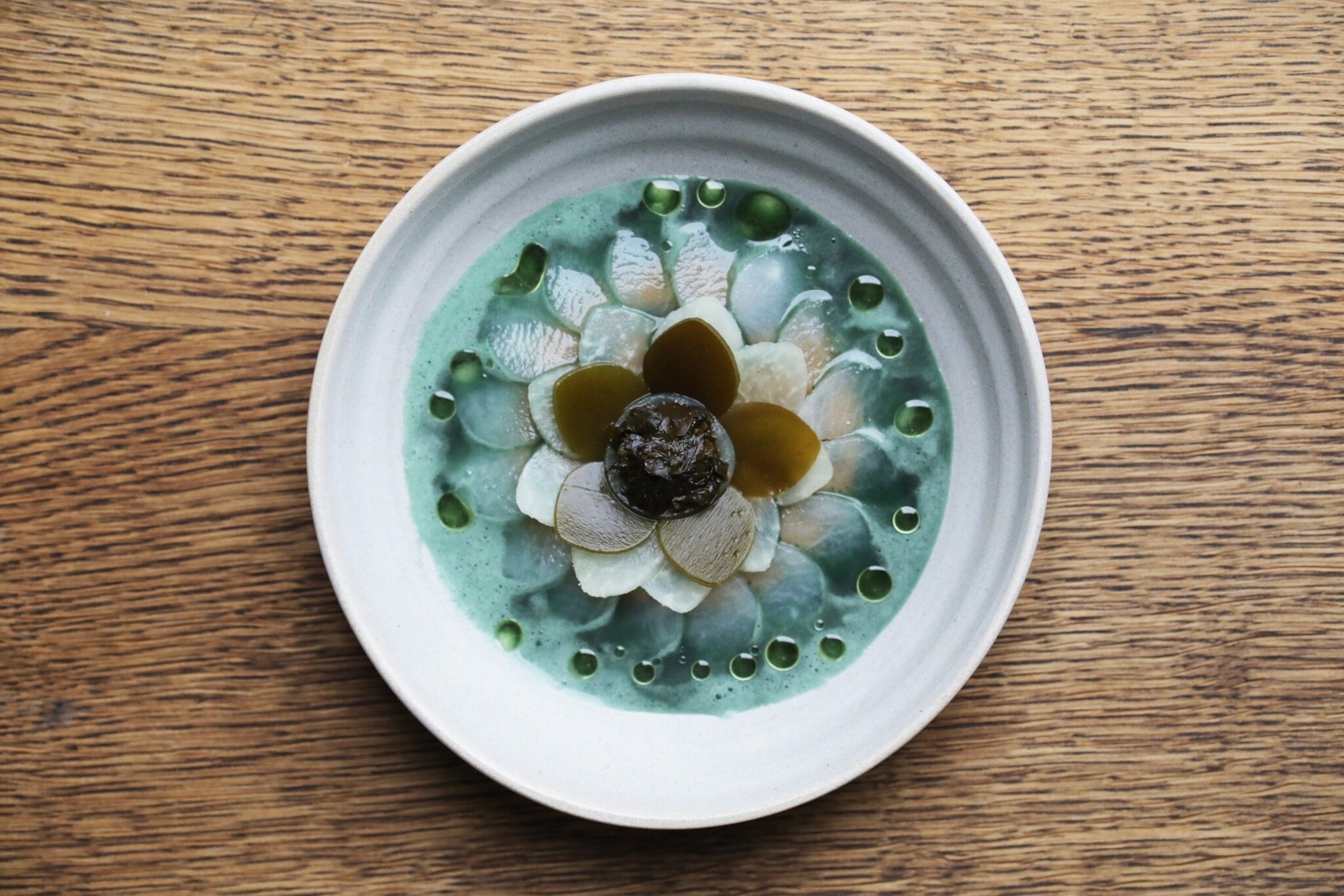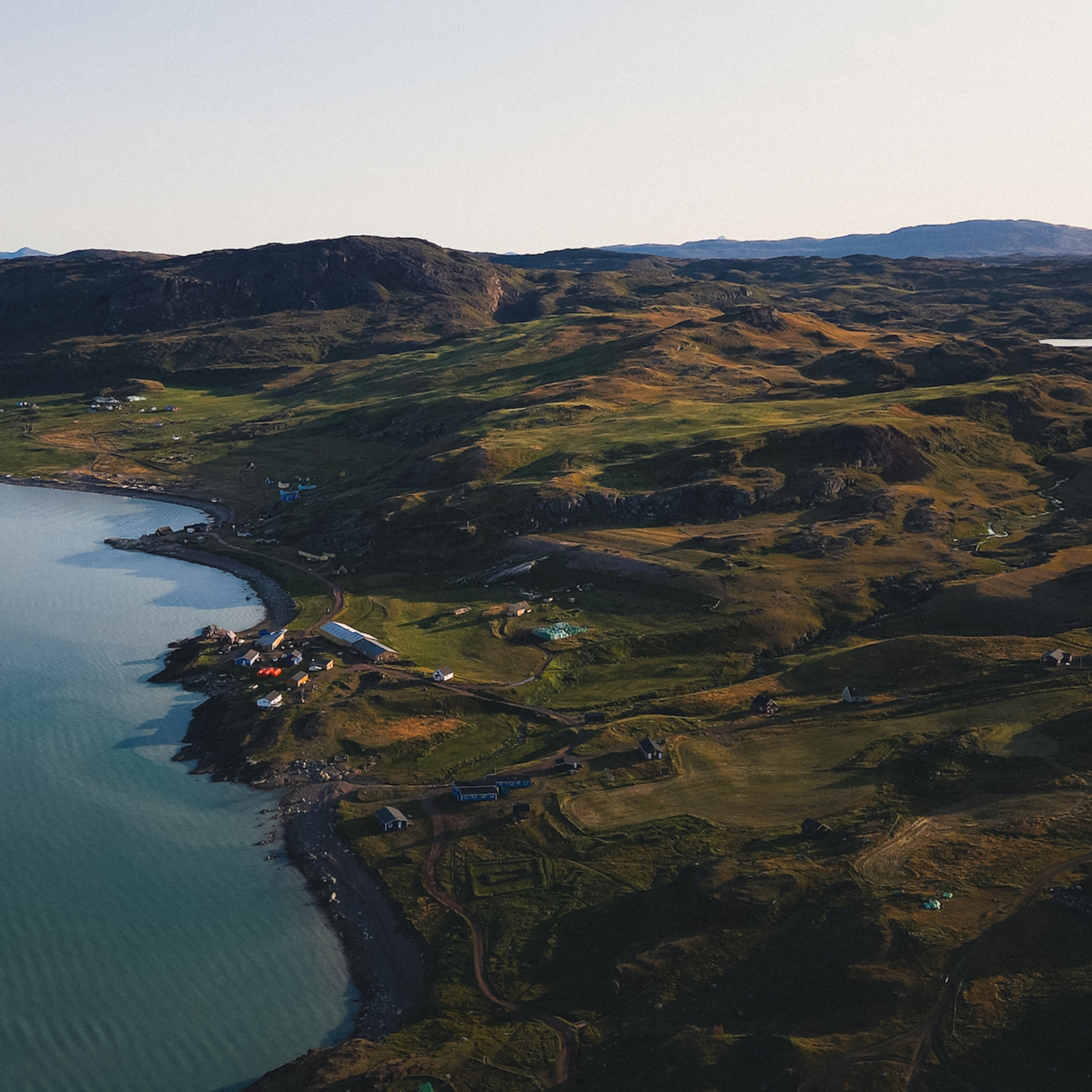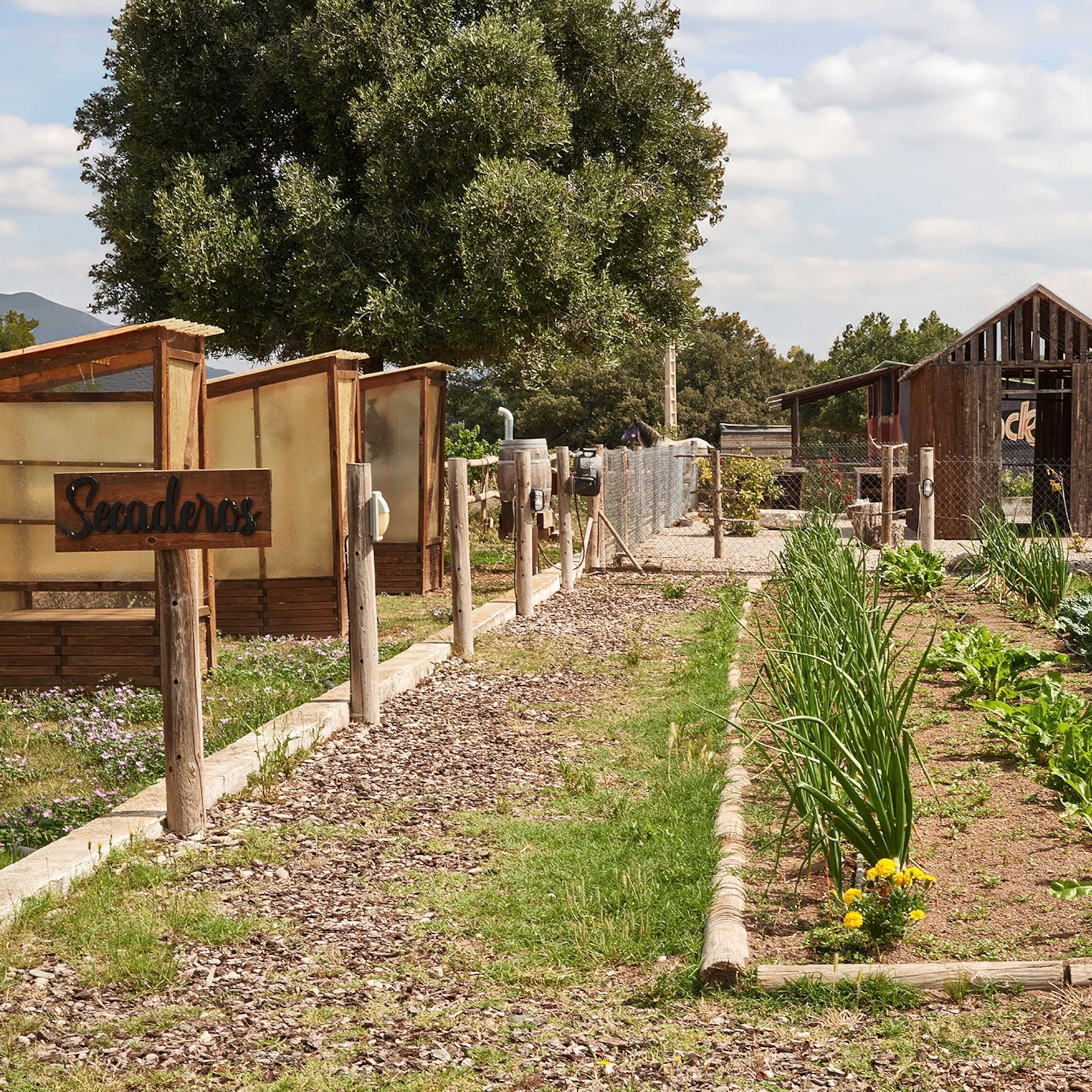
The pioneer: Dutch chef Emile van der Staak on ditching meat and growing his own ingredients
At his Netherlands restaurant, De Nieuwe Winkel, chef Emile van der Staak is redefining fine dining by turning his back on meat in favour of plants grown in a nearby ‘food forest’.
“It’s not unusual for guests to feel emotional when they discover the story behind our food,” says Emile van der Staak. “Not to mention when they taste it. One person even cried with happiness.” The setting for these tear-jerking scenes? De Nieuwe Winkel, Van der Staak’s restaurant in the Dutch city of Nijmegen. Here, he and his team create experimental vegetarian food using an array of herbs, roots, flowers, nuts and plants — some common, others less so. Chestnuts are turned into fudge and combined with seitan to form kebabs, tulip bulbs are fermented and made into miso, pine needles flavour dainty sweets, and green sunflower seeds are used instead of rice in risotto.
Most of these ingredients come from Ketelbroek Food Forest, a six-acre plot in the village of Groesbeek, eight miles from the restaurant. To the untrained eye, it resembles an ordinary wood, dense with trees and shrubs. But there’s one key difference: everything in it is edible. It was set up in 2009 by Dutch botanist and environmental activist Wouter van Eck as an experiment in slow farming, to see what would happen if the right combination of edible perennials were planted together and left to grow like a natural forest, without pesticides.
“It’s the first ‘food forest’ of its kind in Europe and we’re one of the few restaurants around the world collaborating in this way,” says Van der Staak. “We have more than 400 different species of edible plants that we plan our menus around, such as peach, pawpaw and Japanese plums. And nut trees like chestnut, hazelnut, walnut, heartnut and hickory.”
Van der Staak and Van Eck have grown some plants they previously knew little or nothing about, such as Japanese mountain asparagus and Chinese mahogany — a plant with leaves that taste like onion. Van der Staak harvests the ingredients and, with his fellow chefs, works them into beautifully presented three-, six- or nine-course tasting menus, served in an informal, modern dining room hidden in the backstreets of Nijmegen.
“To us, fine dining is not about the status of a restaurant, its location, expensive designer interior, fancy cutlery and wine list,” says Van der Staak. “It’s about adding value through creativity and using ingredients nobody knows of, which are grown with acute attention to detail.” However, he adds, luxury cooking can be about elevating everyday ingredients, too: “When you start looking at cooking in this way, who’s going to tell me caviar, for example, is more valuable than a carrot grown and nurtured by someone with specialist knowledge of specific varieties?”
In 2021, De Nieuwe Winkel was awarded a Michelin Star, along with a Michelin Green Star for its sustainability efforts. In spring 2022, another Michelin Star was added. “It is, of course, a huge compliment to achieve [these accolades],” says Van der Staak. “But we still like to follow our own course and are always experimenting with new methods.” As a result of his innovative approach — and relatively accessible starting price point (three courses from €65) — Van der Staak says the restaurant has a younger customer base than classic fine-dining establishments. “We attract people who would not usually eat at a traditional luxury restaurant,” he says. “We want as many people as possible to come and enjoy what we do.”

Despite his dedication to gastronomy, Van der Staak wasn’t always set for a career as a chef. Born and raised in a small village in the southern Netherlands, he initially trained as a civil engineer. “My grandfather had several restaurants. My mother said: ‘You will never work in the hospitality industry, because he worked himself to death.’” Undeterred, he entered his first professional kitchen at the age of 14, initially as a dishwasher, but it wasn’t until he was at university that he realised he found his part-time job more enjoyable than his studies. He dropped out on the day of his final exams and became a chef. “I realised I was never going to work as an engineer,” he says. “So I got up and walked away.”
He went on to hone his culinary skills at ROC Eindhoven vocational college, before moving to Amsterdam in 2000, where he worked in some of the Netherlands’ best restaurants. It wasn’t long before he felt the strain of life in the city’s kitchens, though, and in 2006 moved with his girlfriend to Nijmegen, where she’d grown up. He took a job in a local restaurant until he could open his own place.
De Nieuwe Winkel launched in 2011, though initially the menu wasn’t exactly meat-free. “I’d always imagined going vegetarian, but for some reason, we felt that we weren’t yet good enough and were also afraid of losing guests,” he says. “We reduced the amount of meat we served over time until it was nothing more than a garnish.”
He began collaborating with the Food Forest in 2014, and the decision to move away from meat entirely came five years later, when Wouter van Eck suggested trying a vegetarian menu one evening. None of Van der Staak’s fears about alienating his customers were realised. “Of course, nobody was disappointed — it’s about good food,” he says. When the Michelin-starred New York restaurant Eleven Madison Park remained successful after going vegan overnight, that was the push he needed. “This gave me the confidence and inspiration in 2021 to work without animal protein, [and we plan] to become vegan eventually,” he says.
The idea is for the menu to be fully plant-based within a year. “If we can find an alternative to butter and the cheese course, the rest will be easy,” says Van der Staak. “The burned butter is one of the best things we serve, but we plan to test a vegan version of this. For the cheese course, we’re using almonds and fermentation to get the same feel and flavour of a young cheese, and oats to create another one.”
Experimentation is extremely important to Van der Staak, who recently expanded his team of 11 chefs to include someone whose job is solely to test out new ingredients and ideas. As for the future, he hopes to open an outdoor restaurant in the next five years. “But for now,” he says, “the most important thing for us is to continue focusing on how [our] plants are being grown, and the perennial system we’re using in the Food Forest.”

Van der Staak's signature dishes
Seaweed & algae
For this starter, two different varieties of sea plant are used to make a delicately flavoured, vibrant blue broth. Seaweed foraged in the waters of the Oosterschelde Estuary, in the southwestern Netherlands, is cured and combined with fresh algae cultivated in Rotterdam. In the broth sit fine slices of pickled vegetables and a drizzle of sea-lettuce oil.
Chestnut satay
This vegan twist on chicken satay is made of chestnuts left to ferment for up to 48 hours. The process binds them together into a dense cake that can then be cut into cubes and skewered. They’re glazed in a rich sauce made with unripe Szechuan berries, Chinese mahogany, Japanese plums and dark beer, before being cooked over a barbecue.
Forest floor
Van der Staak created this no-chocolate mousse almost by accident, after growing a fruity-scented fungal culture on chestnuts. One of his chefs added cream to the roasted fungus and they found it tasted just like chocolate. The cream has since been replaced with tofu to make the dessert vegan, and other unlikely ingredients have also been added, including porcini mushrooms preserved in sugar, and sliced candied pinecones.
Published in Issue 18 (Winter 2022) of Food by National Geographic Traveller (UK)
Follow us on social media
Twitter | Facebook | Instagram






